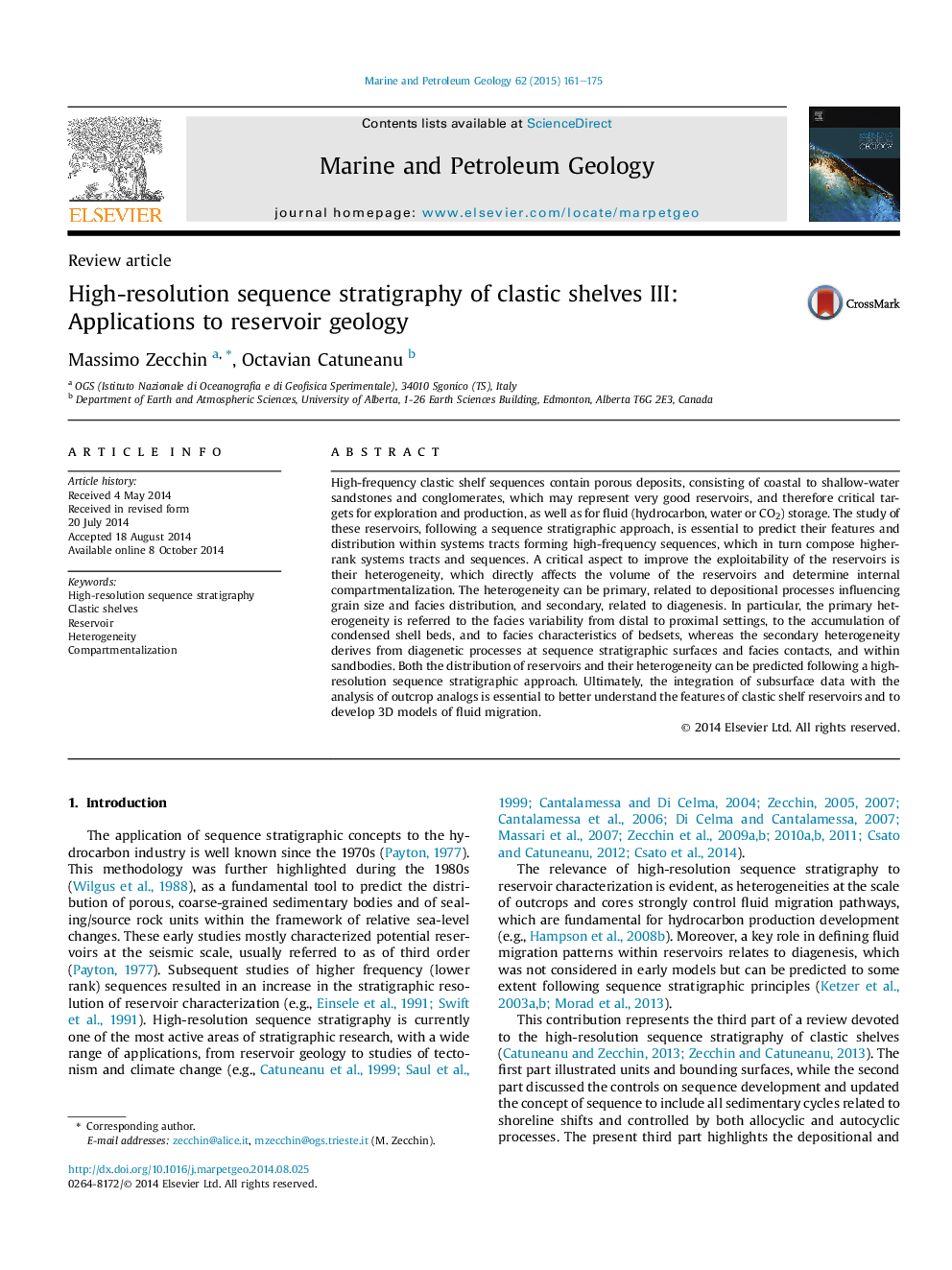| کد مقاله | کد نشریه | سال انتشار | مقاله انگلیسی | نسخه تمام متن |
|---|---|---|---|---|
| 4695567 | 1637163 | 2015 | 15 صفحه PDF | دانلود رایگان |

• The features of clastic shelf reservoirs are illustrated following a sequence stratigraphic framework.
• The heterogeneity of the reservoirs related to depositional and diagenetic processes is illustrated.
• The heterogeneity results in a compartmentalization of the reservoirs at various scales.
High-frequency clastic shelf sequences contain porous deposits, consisting of coastal to shallow-water sandstones and conglomerates, which may represent very good reservoirs, and therefore critical targets for exploration and production, as well as for fluid (hydrocarbon, water or CO2) storage. The study of these reservoirs, following a sequence stratigraphic approach, is essential to predict their features and distribution within systems tracts forming high-frequency sequences, which in turn compose higher-rank systems tracts and sequences. A critical aspect to improve the exploitability of the reservoirs is their heterogeneity, which directly affects the volume of the reservoirs and determine internal compartmentalization. The heterogeneity can be primary, related to depositional processes influencing grain size and facies distribution, and secondary, related to diagenesis. In particular, the primary heterogeneity is referred to the facies variability from distal to proximal settings, to the accumulation of condensed shell beds, and to facies characteristics of bedsets, whereas the secondary heterogeneity derives from diagenetic processes at sequence stratigraphic surfaces and facies contacts, and within sandbodies. Both the distribution of reservoirs and their heterogeneity can be predicted following a high-resolution sequence stratigraphic approach. Ultimately, the integration of subsurface data with the analysis of outcrop analogs is essential to better understand the features of clastic shelf reservoirs and to develop 3D models of fluid migration.
Journal: Marine and Petroleum Geology - Volume 62, April 2015, Pages 161–175